I thought it would be the other way around.
Spearheading the (near-future) launch of my mother vintage Etsy store, I thought there might be some reluctance to let things go.
Instead, she’s willingly taken a deep dive into the process, eager to research and list a small mountain of collectibles.
I will no doubt be her first customer once she launches—I’ll keep you informed—particularly since I’ve called dibs on the vintage (1950s–70) Japanese porcelain rabbit bowl below.
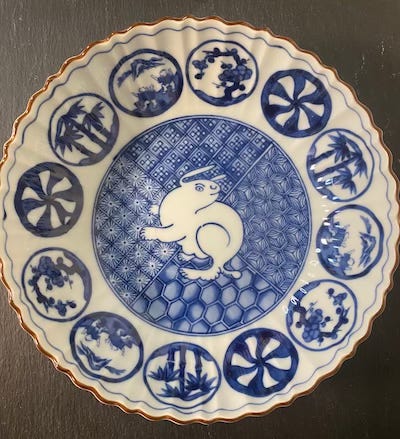
My own Resistance—Meditation HERE—has come up with various projects of my own, particularly those with no external deadlines.
Right now that applies to the podcast companion to this newsletter, one that’s taking me longer than I expected to launch.
Last week I wrote about the necessity of the nudge, without which it’s often hard to get started, even when our journey is towards something we really want.
In particular, I’ve been musing how, as Steven Pressfield put it in The War of Art, that Resistance’s most common manifestation is Procrastination.

Pressfield writes that “Procrastination is the most common manifestation of Resistance because it’s the easiest to rationalize.”
Indeed, Resistance creates an internal conversation that soft-pedals its true intent:
”We don’t tell ourselves, ‘I’m never going to write my symphony.’
Instead we say, ‘I am going to write my symphony;
I’m just going to start tomorrow.’”
The result of which is—no spoiler alert needed—that elusive Tomorrow never arrives.
Or, as Pressfield continues:
“We don’t just put off our lives today;
we put them off till our deathbed.”
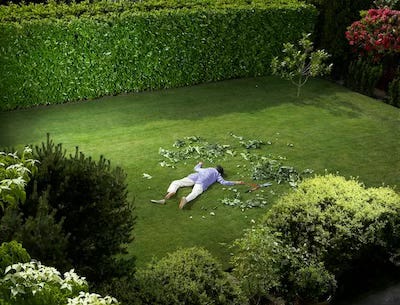
One frequent reason for procrastination is decision paralysis.
I long ago learned that if I told people I was pretty open next week to meet, it was nearly impossible to schedule anything.
When I offered 2 or 3 specific windows, however, somehow the meeting always got easily set-up.
In some ways, perhaps we’re all weighted down by the anxiety over the Butterfly Effect, the term coined by the American mathematician and meteorologist Edward Lorenz in 1961.
Lorenz’s most famous aphorism summarizing how small causes lead to big effects is:
“The flap of a butterfly’s wings
in Brazil can set off a tornado in Texas.”
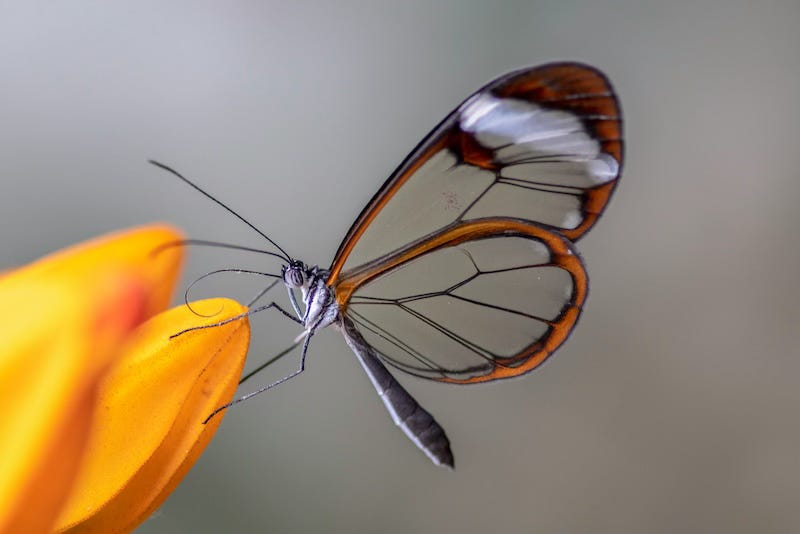
In aviation (and life coaching) the Butterfly Effect is often called the 1-Degree Principle or the Trajectory Effect.
It’s the idea that if your rocket launch is off by just 1 degree, over a 240,000 mile journey, it may seem like you’re starting out just fine, but you’ll miss the moon by a good 4,000 miles or more.
Adding that pressure to Resistance’s grab bag of tricks makes any decision nearly impossible.

Although every poem I share is intended to inspire, in the spirit of giving Resistance its day in court, these dry and wonderful lines by Jeanne Marie Beaumont embody that excuse-loving spirit that so often holds us back.
Afraid So
Is it starting to rain?
Did the check bounce?
Are we out of coffee?
Is this going to hurt?
Could you lose your job?
Did the glass break?
Was the baggage misrouted?
Will this go on my record?
Are you missing much money?
Was anyone injured?
Is the traffic heavy?
Do I have to remove my clothes?
Will it leave a scar?
Must you go?
Will this be in the papers?
Is my time up already?
Are we seeing the understudy?
Will it affect my eyesight?
Did all the books burn?
Are you still smoking?
Is the bone broken?
Will I have to put him to sleep?
Was the car totaled?
Am I responsible for these charges?
Are you contagious?
Will we have to wait long?
Is the runway icy?
Was the gun loaded?
Could this cause side effects?
Do you know who betrayed you?
Is the wound infected?
Are we lost?
Will it get any worse?
This isn’t a BuzzFeed quiz, but if it were, I’m curious how many times we worried about “Afraid so” answers for any of the above.
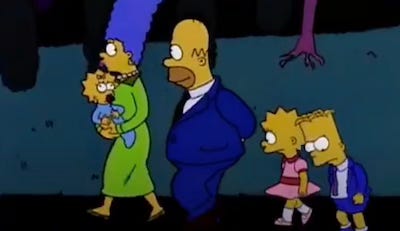
Perhaps the deepest reason why procrastination is such a useful weapon in Resistance’s arsenal is summarized by the classic Simpson’s scene above (original clip HERE).
As Homer tells Lisa and Bart:
“Kids, you tried your best
and you failed miserably.
The lesson is, never try.”
While we may laugh, wisely knowing that the opposite is true, it’s all too easy to secretly believe this lie.
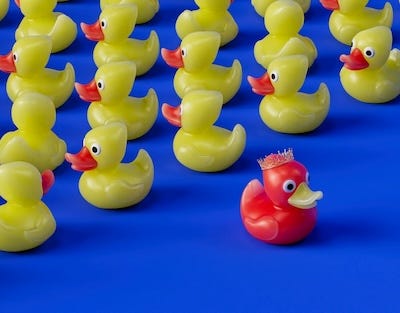
I had a quirky breakthrough around Dave Goggins’ 40 percent rule.
First, in case you’re not familiar, Goggins is an extreme endurance athlete.
He’s completed countless ultra-marathons, triathlons, and extreme endurance events — some even beyond Ironman standards.
Remarkably, he’s also the only person to have finished Navy SEAL training, the Army’s Ranger School, and Air Force tactical air controller training.
And he’s gained huge success as a mindset coach, with statements such as:
“When you think that you are done,
you’re only 40% in to what your body’s capable of doing.
That’s just the limits that we put on ourselves.”
I know that’s meant to be inspiring—and of course it is—but like telling a riled up person to relax, informing an overwhelmed person they’re only 40% of the way there might just have the opposite effect.
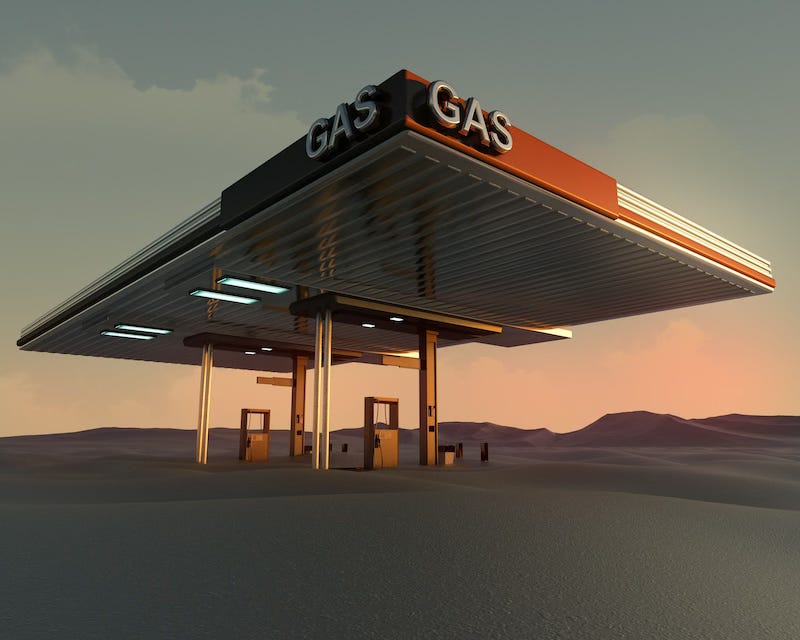
Here’s how I contorted that reasoning around my resistance in a way that released it.
I realized my Inner Homer Simpson was encouraging me to delay — because if I crossed everything off the project launch to-do list and it did NOT work, where would I be?
Then I realized I can only see 40% of what I need to do.
At least 60% of the work remains in a quantum state, ready to reveal itself only when I’m further down the road.
Yes, the idea of many more tasks ahead caused a weary sigh, but it also took away the resistance that “this is it”—once you’ve finished, it’s either pass or fail.
Or, in Dave Goggins-speak, there’s always another ultra-triathlon ahead.

A more positive spin on this, by the way, might be Maya Angelou’s immortal lines:
“You can’t use up creativity.
The more you use, the more you have.”
Realizing that making choices expands your options rather than limiting them can be tremendously liberating.
Indeed, as Pressfield writes:
Never forget: this very moment, we can change our lives.
There never was a moment, and never will be, when we are without the power to alter our destiny.
This second, we can turn the tables on Resistance.
This second, we can sit down and do our work.

Don’t get me wrong: There will always be some risk involved in making choices.
As Auden tells us in his poem “Look Before You Leap.”
“The sense of danger must not disappear:
The way is certainly both short and steep,
However gradual it looks from here;
Look if you like, but you will have to leap.”
Sometimes, like my mother with her Etsy shop, there’s minimal Resistance.
Other times, even when launching things I’m passionate about, I encounter my own Homer Simpson telling me it’s better to postpone for a while.
As a final sidebar, I learned while researching that bowl I’m about to purchase, that in Japanese folklore, the markings on the moon aren’t seen as the “man in the moon,” but as a rabbit.
Apparently, he’s endlessly pounding mochi, the sweet rice cakes associated with nourishment, blessings, and wealth.
Perhaps as a counterargument to the Trajectory Effect that Resistance often uses to paralyze us, we could employ this strategy instead:
What about trusting that traveling one degree off course might land us on that new moon — one I learned of only yesterday, but one where abundance and celebration await.

